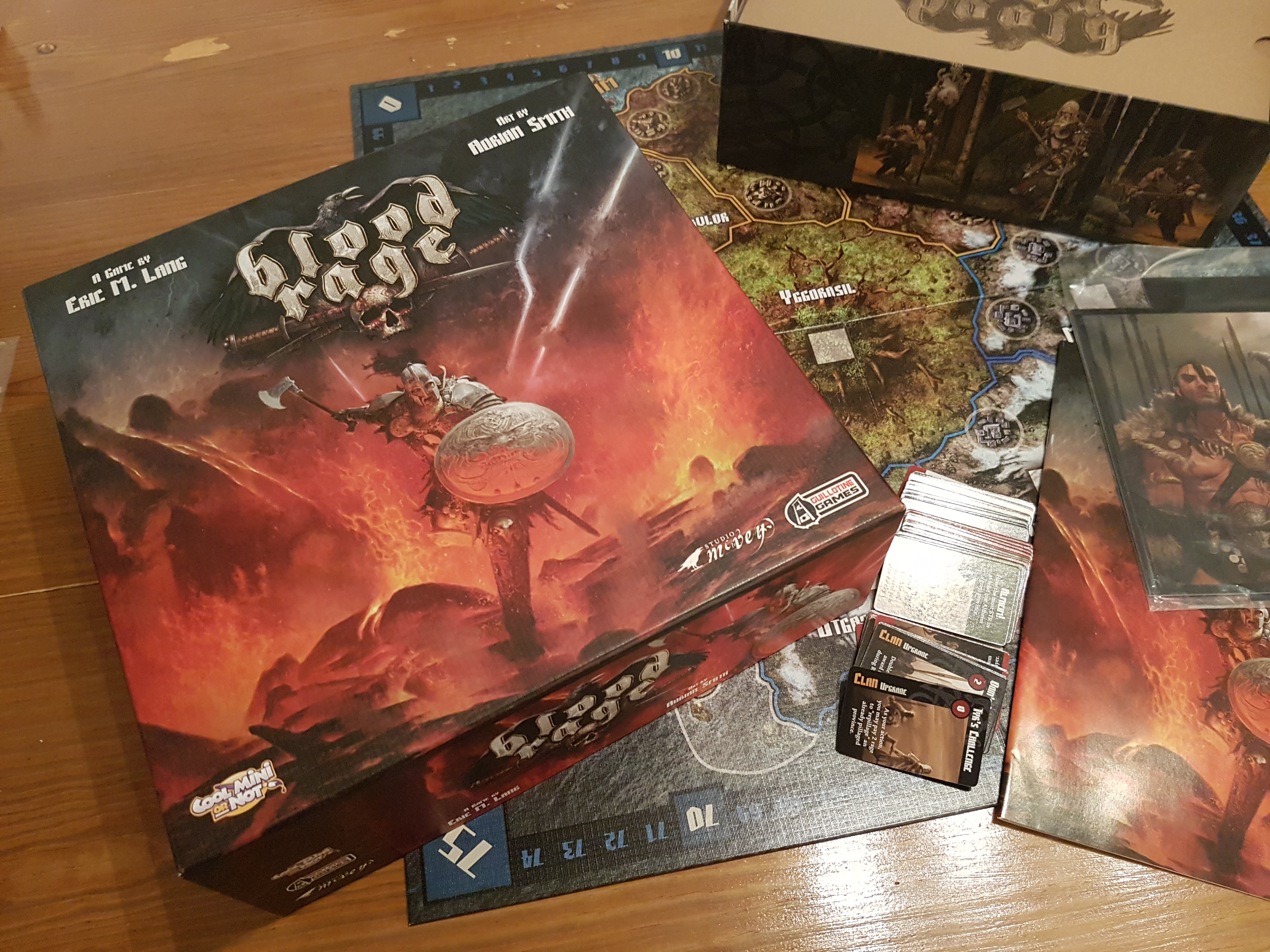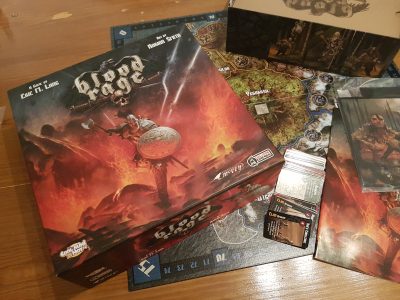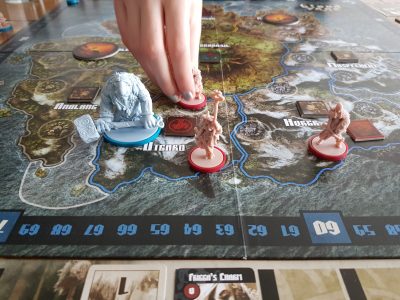Blood Rage is a board game for 2 – 4 players, designed by Eric M. Lang, where Viking clans battle it out during the end of the world. The game is played over 3 ages. At the start of each is God’s Gift, where players draft cards to use in the round. Shuffling the current ages cards, 8 cards are randomly dealt to each player. As with most card drafting games you take the one you deem best and past the rest to the next player, going clockwise around the board. This continue until you receive three cards, where you take 1 of the three and discard the rest back to the box. Concluding the God’s Gift phase, players now have the 6 cards that they can work with in the action phase. These cards can be made up of quests, unit and clan upgrades and strength cards, to help out in battles.
The action phase is the next phase of the age to take place and is when Blood Rage gets extremely interesting. Players take it in turns to spend their rage, the game’s name for action points, to place units on the board, to move units around the board or to play upgrade cards. Upgrades can range from improving the clan as a whole or individual unit types such as the warriors. A range of actions are also available to players for no rage cost, though these must be done before the player reaches zero rage. These include placing down quests you think you might complete and most importantly pillaging!
Pillaging is when battles take place, units die and are sent to Valhalla, clan stat upgrades can be claimed and Glory points are awarded to the victor. When a player has a unit of any kind in either a province or a Fjord adjacent to a province they can choose to start a pillage. From this point going clockwise around the table each player may decide to move a unit at a time into the province until each village space is filled or all players pass. Once this has occurred if more than one clan has units in the province a battle occurs. Each player involved chooses a strength card from their hand and the summation of the cards strength and the combined strength of the players units are added. The highest score wins the battle.
The winner gains glory equal to their axes, if they instigated the pillage they gain the clan stat matching to the pillage token and if they played a strength card it is discarded. The losing clan(s) send their units from that province to Valhalla but retain the strength card they used in the battle. There is almost a make your own luck element to Blood Rage when it comes to the strength cards. If you know that another player is holding a card providing a strength bonus of +5 or +6 you can almost force them into thinking it is necessary to play the card burning it before a later battle.
The engine building element of Blood Rage is kept simplistic but not to the extent it doesn’t impact the gameplay and the Glory each player can gain. There are 3 tracks that players can build upon: Rage, Horns and Axes. Successfully pillaging and completing certain quests gain players 1 space on one of these three tracks. Building on the rage clan stat nets the player additional rage or action points in the subsequent ages. Horns limits the number of miniatures a player can have on the battlefield at one time, a helpful stat to raise if you want to flood the provinces with warriors. Axes relates to the number of Glory points a player gains when winning a pillaging battle. Each stat represents a different approach players can have strategically. You may want to maximise rage for instance, to gain action point advantages for later rounds, but if another player is trying for the same stat you should change tack or neither will gain an advantage.



